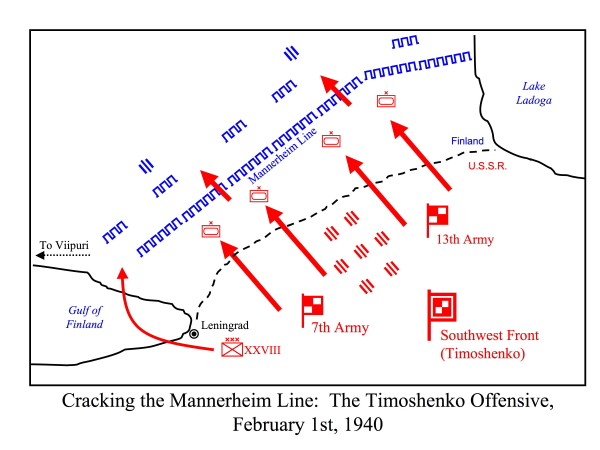I’ve already confessed my love of the Talvisota, the “Winter War,” especially the opening phase in which the tiny Finnish army stood tall and smashed the initial Soviet invasion of their homeland. The Finns were a democratic people, fighting in defense of the patria, and they showed what free men, fighting for a righteous cause, could do even in desperate circumstances. Manpower? The numbers tilted in favor of the Soviet Union a thousand times over. Weapons and technology? Again, not even close. The Red Army had modern tanks and aircraft and artillery. The Finns had to improvise homemade bombs, bottles filled with gasoline that they nicknamed, ironically, Molotov cocktails. Supply? Again, don’t make me laugh. The Red Army was arguably adequate, given the horrendous nature of the arctic winter conditions in which this war took place. The Finns barely registered on the logistic scale, although those reindeer-drawn sleigh columns are still impressive.
This is the version of the Winter War that history continues to teach us. The defenders triumphant. Heroes drawing a line in the sand… er… snow. A tyrant seeking the subjugation of a free and hearty race thwarted in his foul and demented quest.
Yeah…. Unfortunately, we live in a cruel world, and I’m sure you know where this is headed.

The New Year of 1940 saw the tide turn when Stalin named one of his brighter young officers, General S. K. Timoshenko, to the supreme command of the theater. The new supremo was just 44 years old, vigorous, and filled with good ideas. We might call him one of the rare upsides of Stalin’s murderous purges. A whole cohort of experienced professional officers had just gone to the grave, and that is rarely a good thing for a modern army. In many (most?) cases, the new men were hacks and bunglers and butchers, just as you would expect. But just enough of them were smart younger men, ambitious and determined to show that they belonged.
Timoshenko prepared carefully, then did what any analyst would label the obvious thing: suspending the fruitless fight to the north and launching a coordinated assault by two entire armies, the 7th and the 13th—some 600,000 men in all, supported lavishly by artillery and aircraft—against the Mannerheim Line. Soviet losses were stupendous, but the Finns were no match for such numbers. Timoshenko also showed some finesse, launching his 28th Rifle Corps across the ice of the frozen Gulf of Finland towards the key port of Viipuri and turning the Line’s right flank. The assault opened on February 1st, 1940 and cracked the Line by the 11th. By the 25th, Viipuri had fallen and the main Viipuri-Helsinki road was in Soviet hands. The Finns, having suffered 30,000 casualties and levered out of their one solid defensive position, had no choice but to ask for terms.
The Soviets had won the Winter War, taking the territories they’d demanded and more: Viipuri, the northern port of Petsamo, and some 20,000 square miles of Karelia. The cost, however, had been unbelievable. Nikita Khrushchev would later estimate the casualty figure at a nice, even one million. His number is almost certainly inflated, part of his effort to de-Stalinize the Soviet Union, but the reality is bad enough: somewhere between 400,000 and 600,000 total casualties, depending on the source you read, with 120,000 to 200,000 of them killed in action. However you do the math, it was a steep price to pay for what was, after all, a relatively minor border rectification.
Even here, though, we must accept the complexity of military history. The world paid a great deal of attention to the opening phase of the Winter War, with those nimble Finnish ski troops slashing into their lumbering adversary. I fully admit to sharing in this prejudice. So did Hitler and the planners on the German General Staff. Their conclusion was that an invasion of the Soviet Union would be a pushover. Perhaps they all should have paid more attention to the end of the fighting, to Timoshenko’s war.
And I promise to do just that. Maybe next year.
For the latest in military history from World War II‘s sister publications visit HistoryNet.com.




